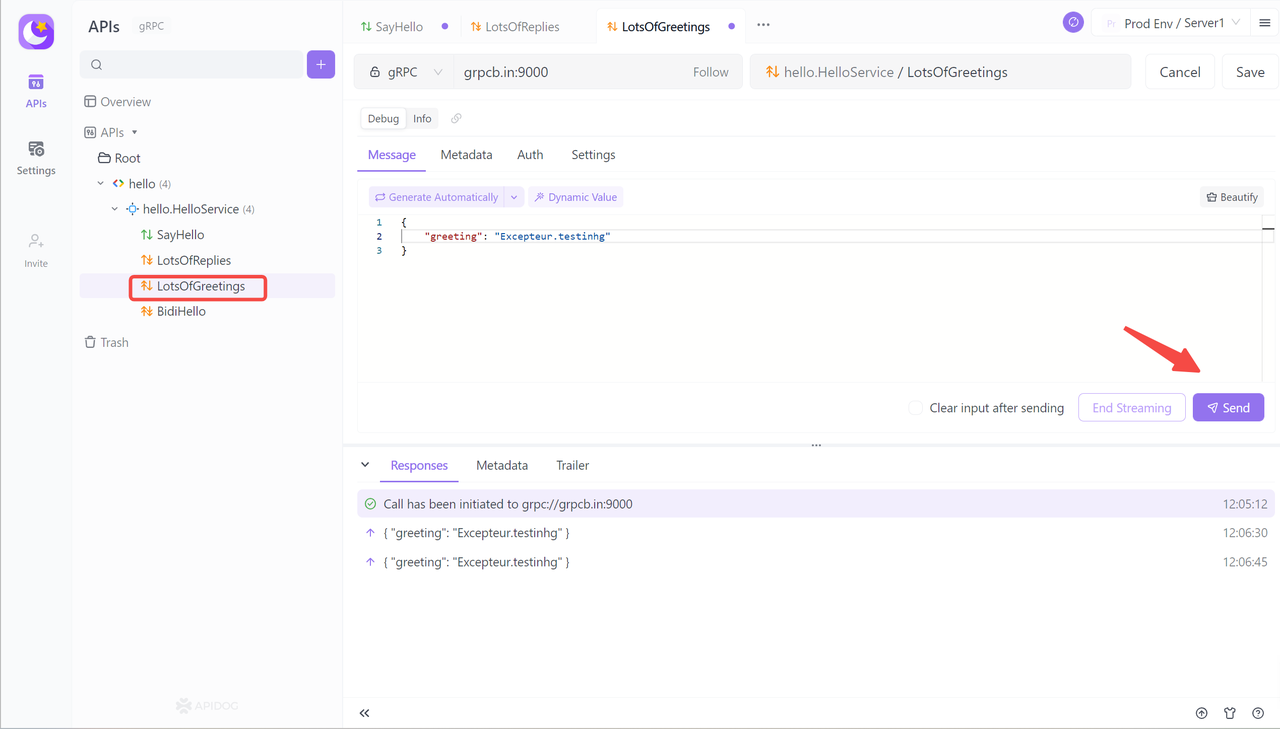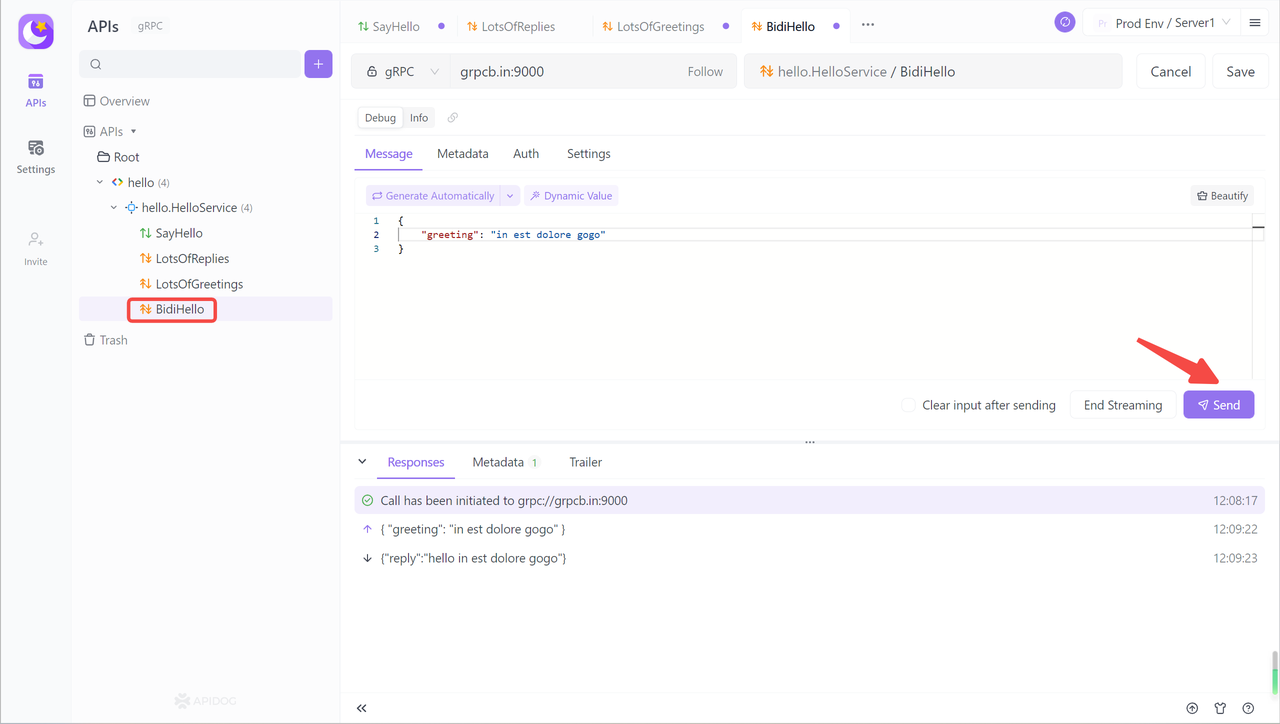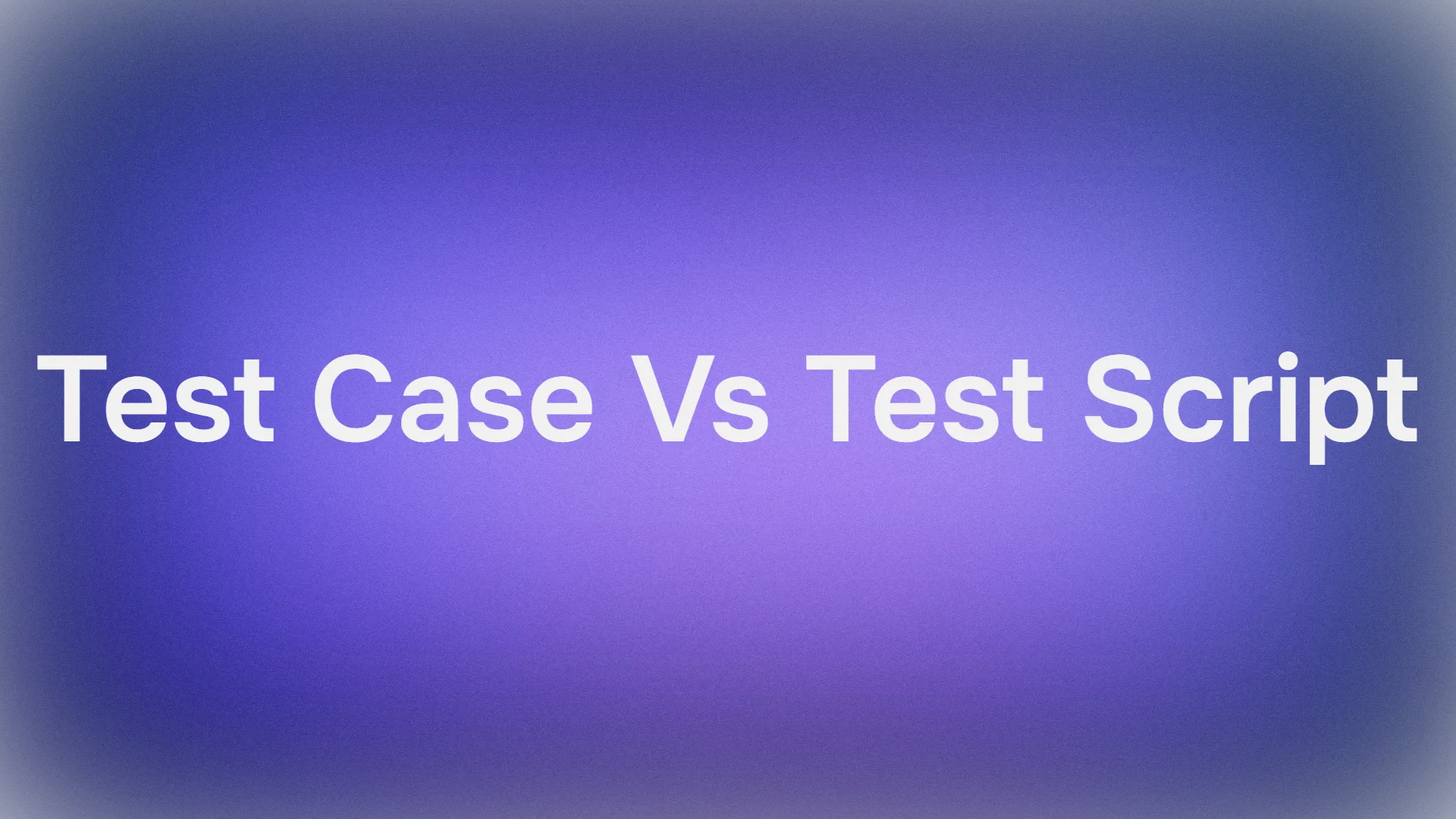Are you looking for a way to build fast and efficient APIs? Look no further than python gRPC! This open-source framework is designed to help you build high-performance APIs that can handle large amounts of data with ease. In this blog post, we will explore the basics of Python gRPC and how it can help you build better APIs. And how can you test it using Apidog.
What is gRPC?
gRPC is a modern open source Remote Procedure Call (RPC) framework developed by Google that can run in any environment and connect services in and across data centers, distributed computing and devices. It supports load balancing, tracing, health checking and authentication with Protocol Buffers and bi-directional streaming.

In contrast to REST (Representational State Transfer), which is an architectural style for building web services, gRPC is a protocol that defines how clients and servers communicate with each other. gRPC uses Protocol Buffers, a powerful binary serialization toolset and language, to define the service and message structure. It can automatically generate idiomatic client and server stubs for your service in a variety of languages and platforms.
gRPC is a high-performance, open-source, and cross-platform RPC framework that can be used to connect services in and across data centers, distributed computing, and devices.
Why use gRPC?
gRPC is a modern and high-performance Remote Procedure Call (RPC) framework that is gaining popularity among developers. It provides a robust solution for client-server architectures like APIs and microservices. gRPC uses HTTP/2 as its underlying transport protocol, which makes it faster and more efficient than traditional REST APIs.
Some of the advantages of using gRPC include:
- Performance: gRPC is faster than REST APIs because it uses binary data instead of text data, which reduces the size of the payload and the number of round trips required to complete a request.
- Interoperability: gRPC supports multiple programming languages, which makes it easy to build APIs that can be used across different platforms and devices.
- Ease of use: gRPC provides a simple and intuitive API that makes it easy to build and maintain APIs.
- Streaming: gRPC supports both client-side and server-side streaming, which allows for more efficient communication between clients and servers.
In summary, gRPC is a powerful and efficient RPC framework that provides a modern alternative to traditional REST APIs. It is especially useful for building APIs that require high performance and interoperability across different platforms and devices.

What is Python gRPC?
Python grpc is an open-source framework that allows you to build fast and efficient APIs. It is based on the Remote Procedure Call (RPC) model and uses the Protocol Buffers data format to serialize data. This makes it an ideal choice for building APIs that need to handle large amounts of data quickly and efficiently.
How does Python gRPC work?
Python gRPC is a high-performance, open-source framework that allows you to build distributed systems and microservices. It uses the Protocol Buffers data format for serializing structured data between services.
Here’s a brief overview of how Python gRPC works:
- Define a service in a
.protofile. - Generate server and client code using the protocol buffer compiler.
- Use the Python gRPC API to write a simple client and server for your service.
The official gRPC documentation provides a basic tutorial that walks you through the process of defining a service, generating server and client code, and writing a simple client and server for your service. The tutorial assumes that you have read the Introduction to gRPC and are familiar with protocol buffers.
How to use Python gRPC
To get started with Python gRPC, you will need to install the grpcio and grpcio-tools packages. You can install these packages by running the following command in your terminal:
pip install grpcio grpcio-tools
Defining your service
Once you have these packages installed, you can define your service in a .proto file. This file will define your service and the methods that it will expose, as well as the data types that your API will use. Here is an example of what a .proto file might look like:
syntax = "proto3";
package myservice;
service MyService {
rpc MyMethod(MyRequest) returns (MyResponse) {}
}
message MyRequest {
string my_field = 1;
}
message MyResponse {
string my_field = 1;
}
Generating server and client code
Once you have defined your service, you can use the grpcio-tools package to generate the server and client code. You can do this by running the following command in your terminal:
python -m grpc_tools.protoc -I. --python_out=. --grpc_python_out=. myservice.proto
This will generate two files: myservice_pb2.py and myservice_pb2_grpc.py. The former contains the data types that your API will use, while the latter contains the server and client code.
Building your server
To build your server, you will need to create a Python file that implements your service. This file will handle incoming requests and send back responses. Here is an example of what a server implementation might look like:
import grpc
import myservice_pb2
import myservice_pb2_grpc
class MyServiceServicer(myservice_pb2_grpc.MyServiceServicer):
def MyMethod(self, request, context):
response = myservice_pb2.MyResponse()
response.my_field = "Hello, " + request.my_field
return response
server = grpc.server(futures.ThreadPoolExecutor(max_workers=10))
myservice_pb2_grpc.add_MyServiceServicer_to_server(MyServiceServicer(), server)
server.add_insecure_port('[::]:50051')
server.start()
server.wait_for_termination()
Building your client
Finally, to build your client, you will need to create a Python file that makes requests to your server. This file will send requests to the server and receive responses. Here is an example of what a client implementation might look like:
import grpc
import myservice_pb2
import myservice_pb2_grpc
channel = grpc.insecure_channel('localhost:50051')
stub = myservice_pb2_grpc.MyServiceStub(channel)
request = myservice_pb2.MyRequest()
request.my_field = "World"
response = stub.MyMethod(request)
print(response.my_field)
Free tool to test Python gRPC: Apidog
Apidog is a robust API testing tool that offers an extensive range of features for testing and debugging gRPC.
Server Streaming
Server Streaming, as the name implies, involves sending multiple response data in a single request. For instance, it could involve subscribing to all the transaction price data of stocks within a one-minute timeframe.

Client Streaming
In this mode, the client can continuously send multiple request messages to the server without waiting for immediate responses. After processing all the requests, the server sends a single response message back to the client. This approach is well-suited for efficiently transmitting large amounts of data in a streaming manner, which helps reduce latency and optimize data exchange.

Bidirectional Streaming
Bidirectional Streaming enables clients and servers to establish persistent bidirectional communication and transmit multiple messages simultaneously. It is commonly employed in online games and real-time video call software, and is well-suited for real-time communication and large-scale data transmission scenarios. After initiating the call, the client and the server maintain a session between them and receive real-time responses after sending different request contents.

Collaborating on gRPC APIs
Apidog can generate human-readable gRPC interface documents from .proto files, facilitating team collaboration on interfaces. Click the menu button on the right side of the interface to obtain the collaboration link and share it with other team members to align the interface debugging approach.

Conclusion
In conclusion, {{python grpc}} is a powerful framework that can help you build fast and efficient APIs. By using the RPC model and the Protocol Buffers data format, you can build APIs that can handle large amounts of data with ease. With the help of the grpcio and grpcio-tools packages, you can easily generate server and client code and build your API in no time.
By following best practices and using tools like Apidog, you can ensure that your gRPC code is secure and efficient.



